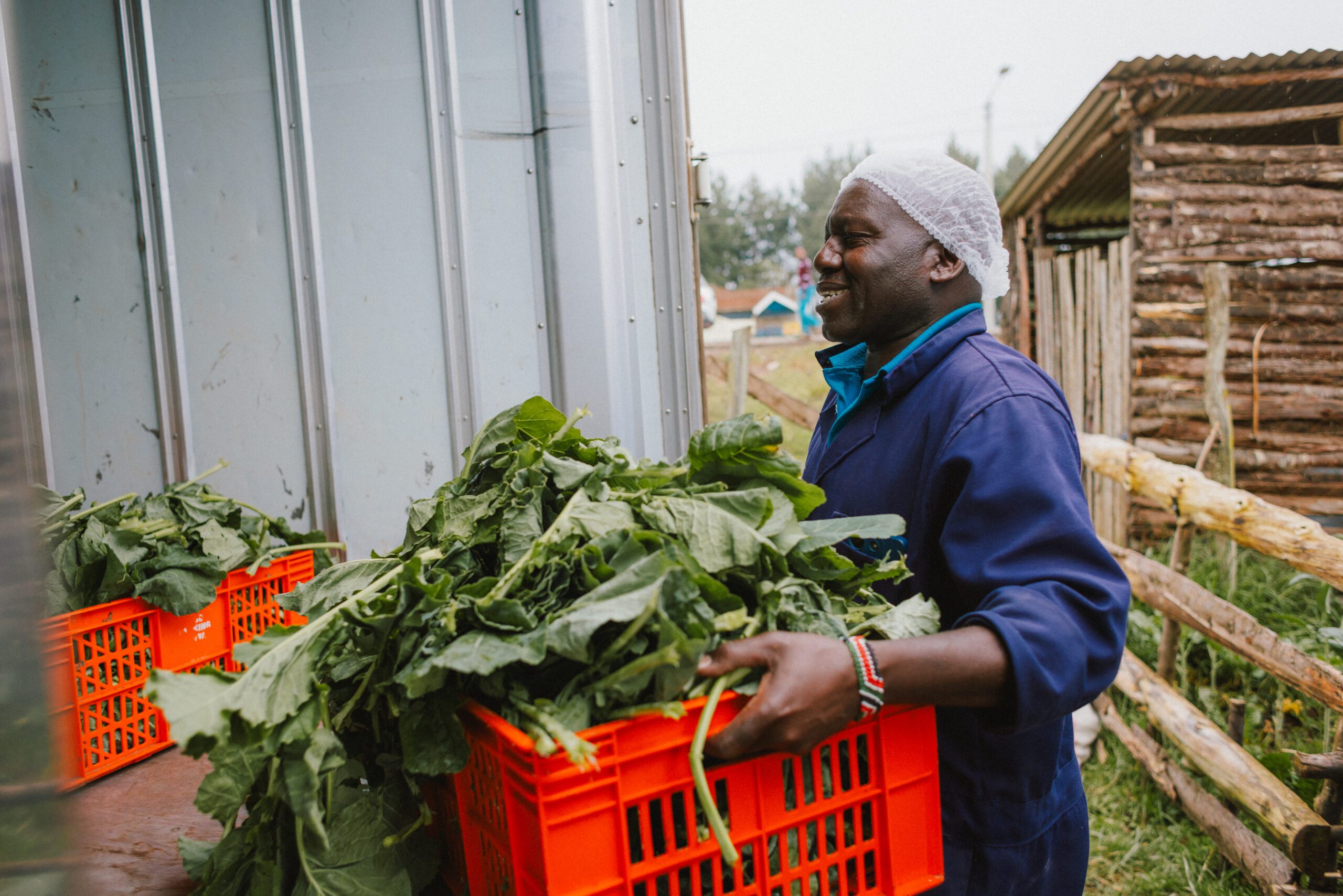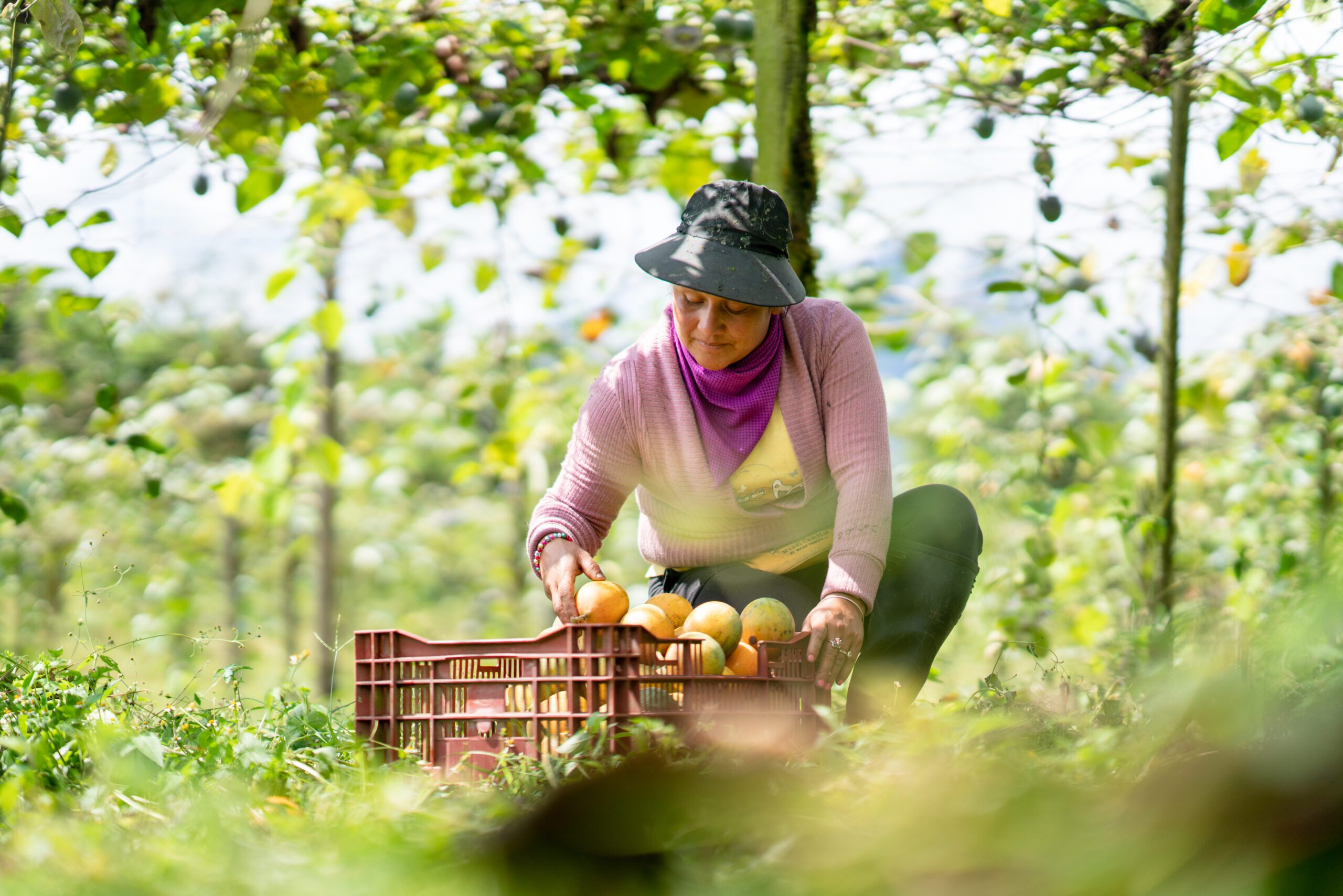Inside the bustling warehouse of the Fundación Saciar food bank in Medellin, Colombia, workers ferry handcarts stacked with crates of fruits and vegetables between storage areas, refrigerator units and trucks. Staff and volunteers sort and classify a cornucopia of fresh produce before repacking it for the families and institutions to which they deliver nutritious food. On average, more than 10 tons of produce comes through the food bank daily.
In comes David Alejandro Restrepo. He vigorously grabs a crate and empties it onto a pile of wood shavings on the floor of a side room. He empties another crate and then empties a few plastic bags of stale and moldy bread into the mix. He sprinkles sawdust on top and then, with a flat-ended shovel, he begins mashing and mixing it all together.
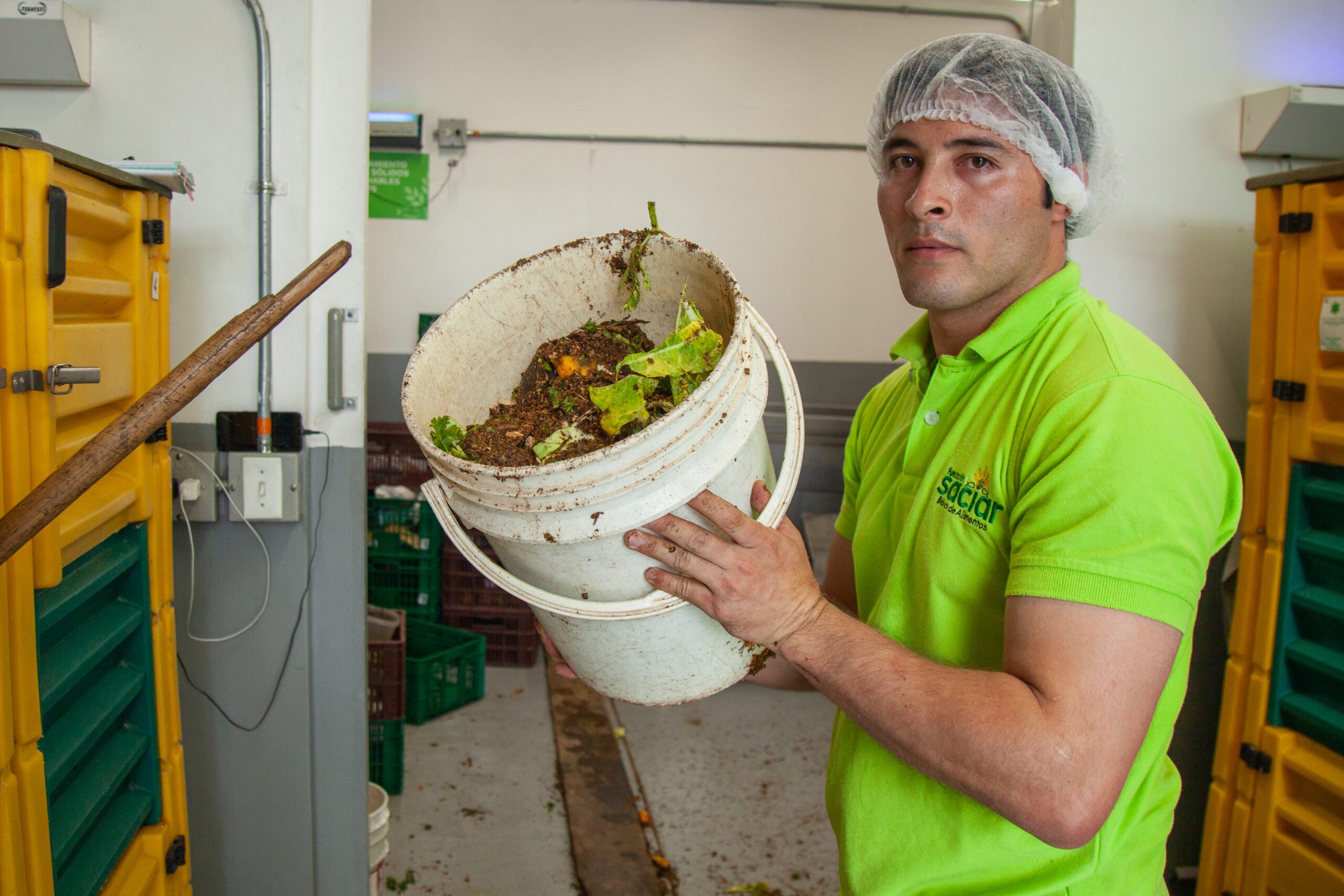
“We’re just breaking the food into smaller pieces but chemistry will do most of the work of breaking this food down and turning it into compost,” says Restrepo, the compostable organic waste associate at Fundación Saciar.
He dumps some more vegetables on top and keeps mixing.
During one month in 2018, Saciar staff noted that 8 tons of organic waste occurred as a result of their stringent sorting and classification process. “We knew the waste [would] pollute our air because it ended up at a landfill, so we had to do something,” says Gloria Maria Vera, the quality control coordinator at Fundación Saciar.
Food loss and waste is a problem in every corner of the world. Nearly one-third of all food is lost or wasted, and all that rotting food is responsible for up to 10% of global greenhouse gas emissions. Food banks play a key role in reducing the environmental impacts of food waste by recovering and redistributing food to those who need it before it ends up in a landfill.
Composting was a natural solution for Fundación Saciar, which is a powerhouse of agricultural recovery, through which food banks receive fresh produce that can’t be sold directly from farms. Strict aesthetic standards at supermarkets, price fluctuations and transportation challenges mean farmers sometimes can’t sell their entire crop, so food banks step in to collect the surplus. In 2024, the food bank recovered more than 4,000 tons of fresh fruit and vegetables through its agricultural recovery program, REAGRO.
This allows Fundación Saciar to deliver highly nutritious food to people who need it most but working with highly perishable foods can also generate some waste, a bit more than 1% of all fresh produce they recover.
“This food may not be able to nourish people at their dinner table, but it can still nourish soils degraded by chemicals,” says Vera.
So the food bank invested in composting containers and made composting a part of their daily operations.
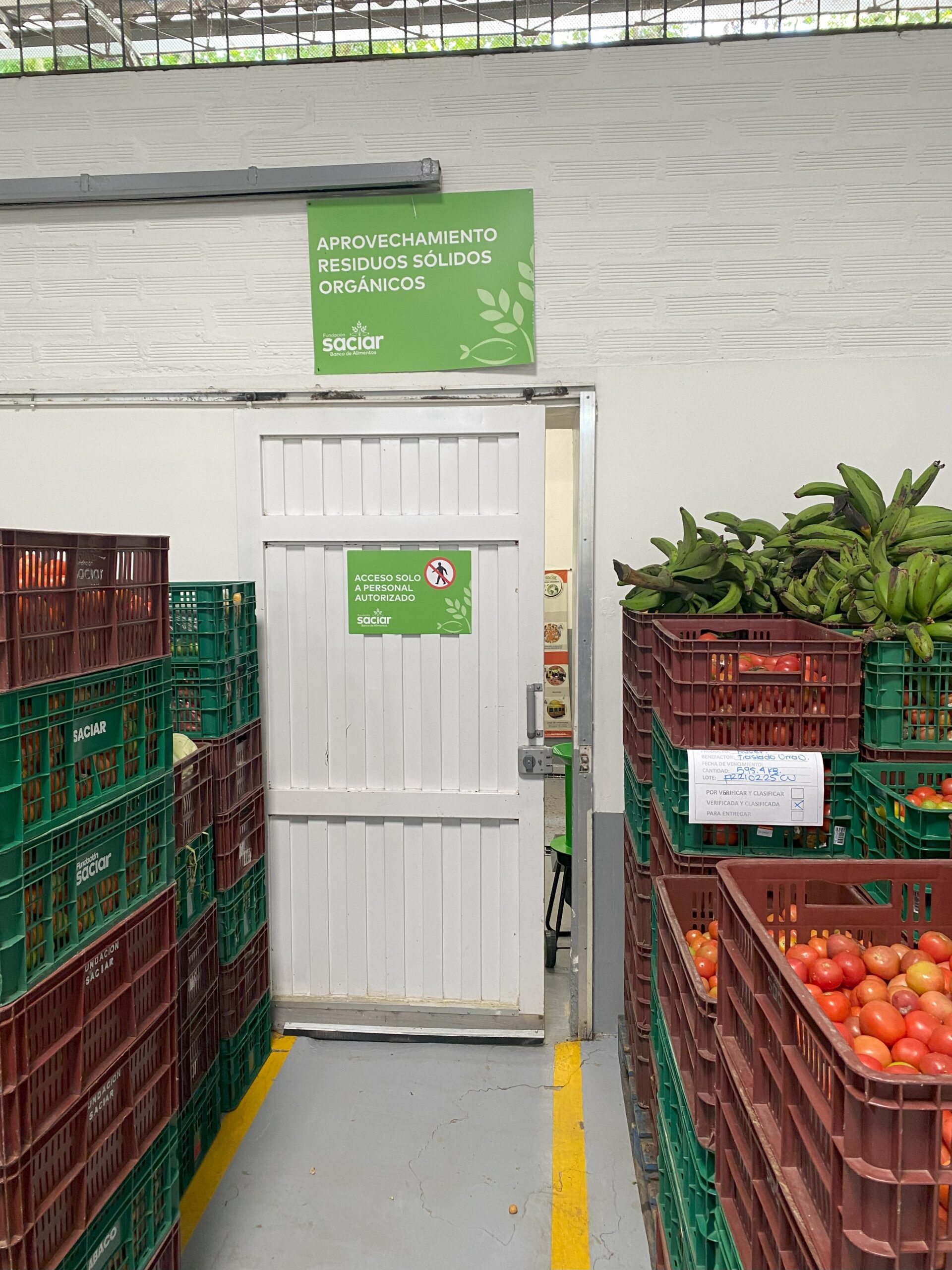
“The composting program has led to more environmental consciousness among our staff and volunteers,” says Vera. “It shows that small actions, like proper sorting of waste, contributes directly to environmental protection.”
Restrepo has finished mixing the rotten vegetables and grabs a fistful of the mixture in a gloved hand. He squeezes tight.
“This is to make sure the mixture has the right humidity,” he says. “It should be wet enough to hold together as a ball but when I squeeze it, no liquid should come out.”
An expert at this, Restrepo’s mixture passes the test, and he loads it into a 6-foot-tall plastic container. For now, Restrepo’s job is done — these organic materials will break down over the next 40 days. All he has to do is keep an eye on the thermometers sticking out of the containers. Microorganisms produce heat when breaking down matter, so the mixture should heat up and then later cool down when the process is complete.
One container has been breaking down for about 45 days. The temperature indicates the process is done.
Restrepo shovels the broken-down mixture onto a mesh sifter. With Vera’s help, they shake out the mixture, sifting out large seeds or peels that will go back into the next batch. Restrepo picks up the finished compost, a light brown soil, in his bare hands and sniffs it. It smells fresh and earthy, nothing like the rotting food that went into it.
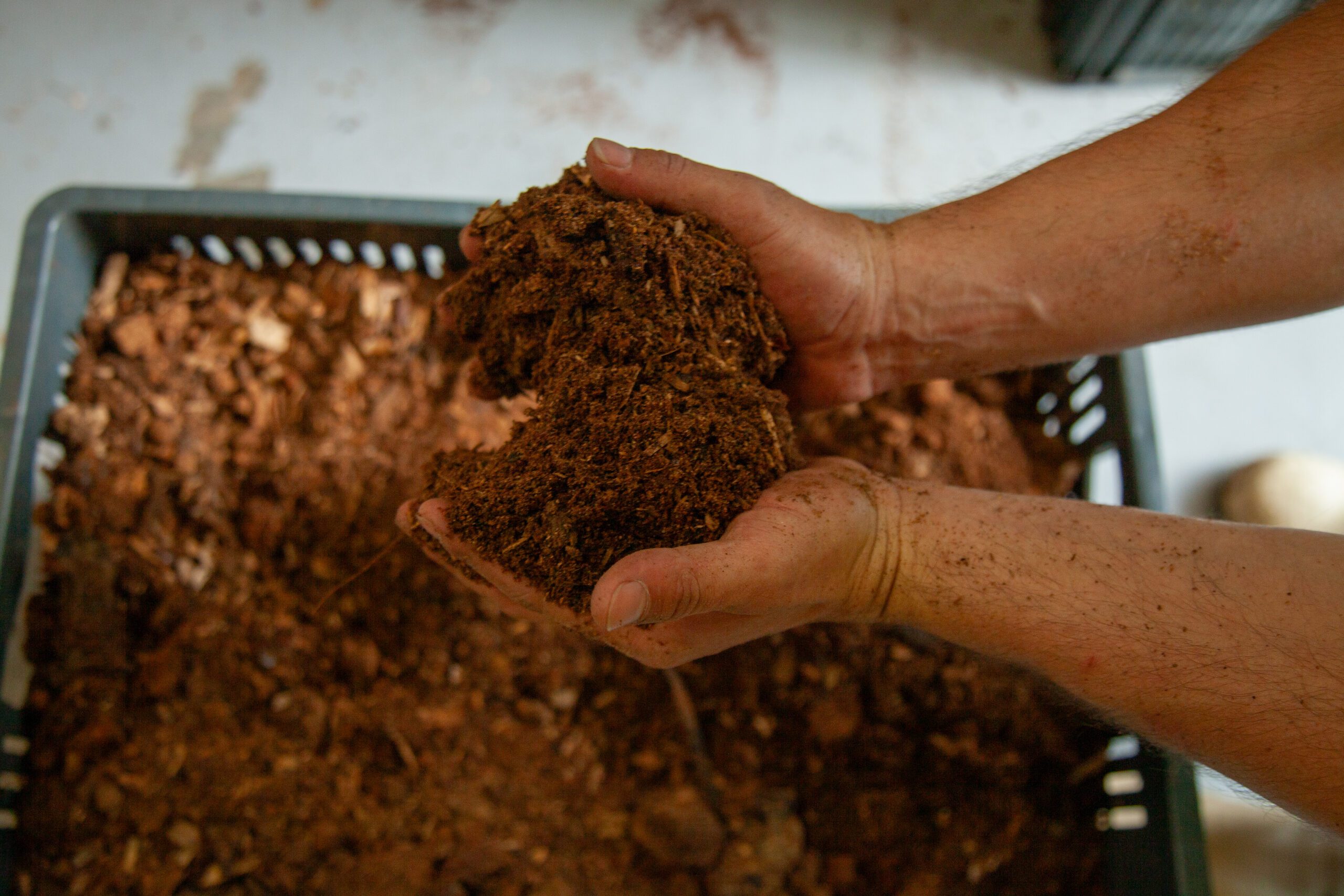
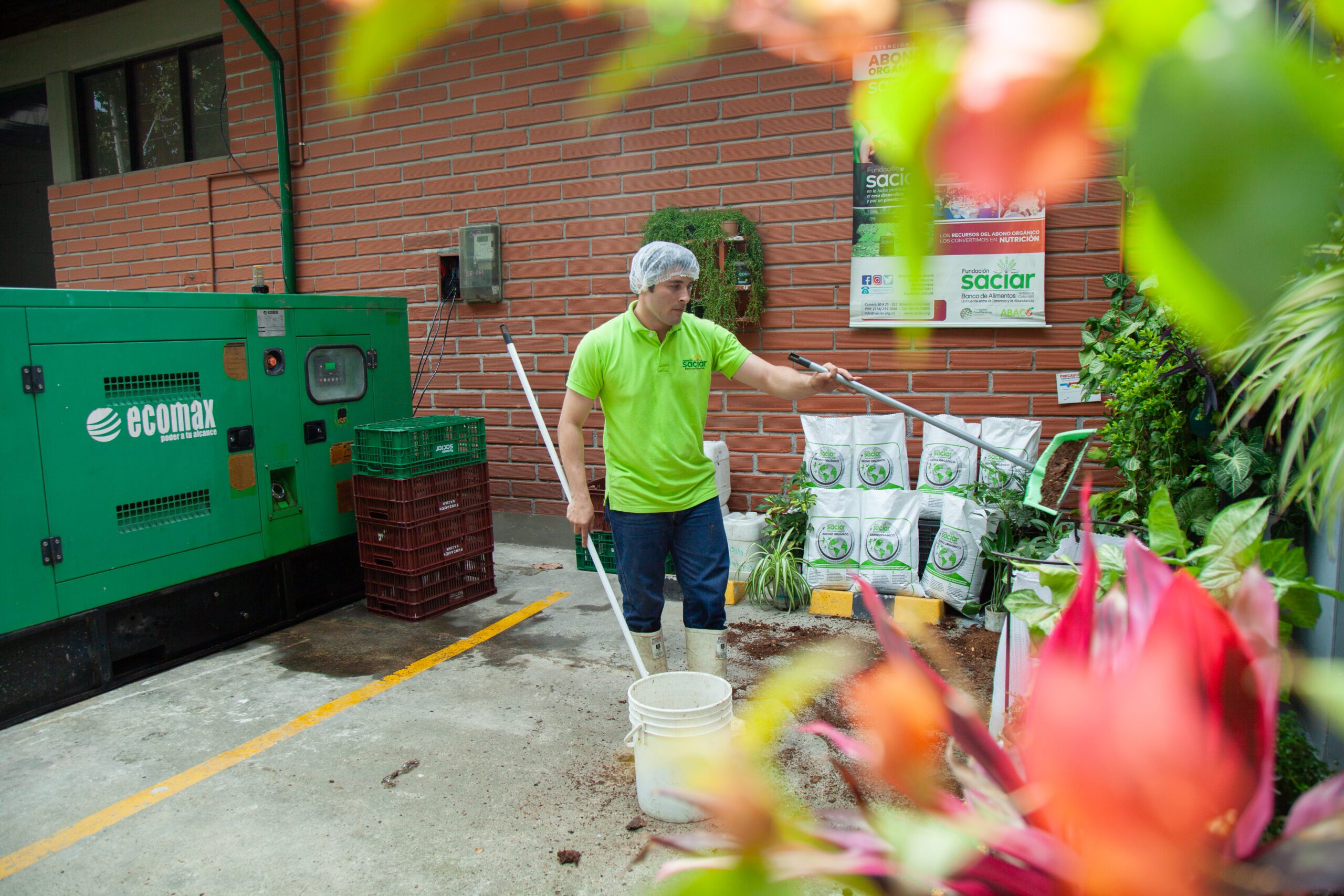
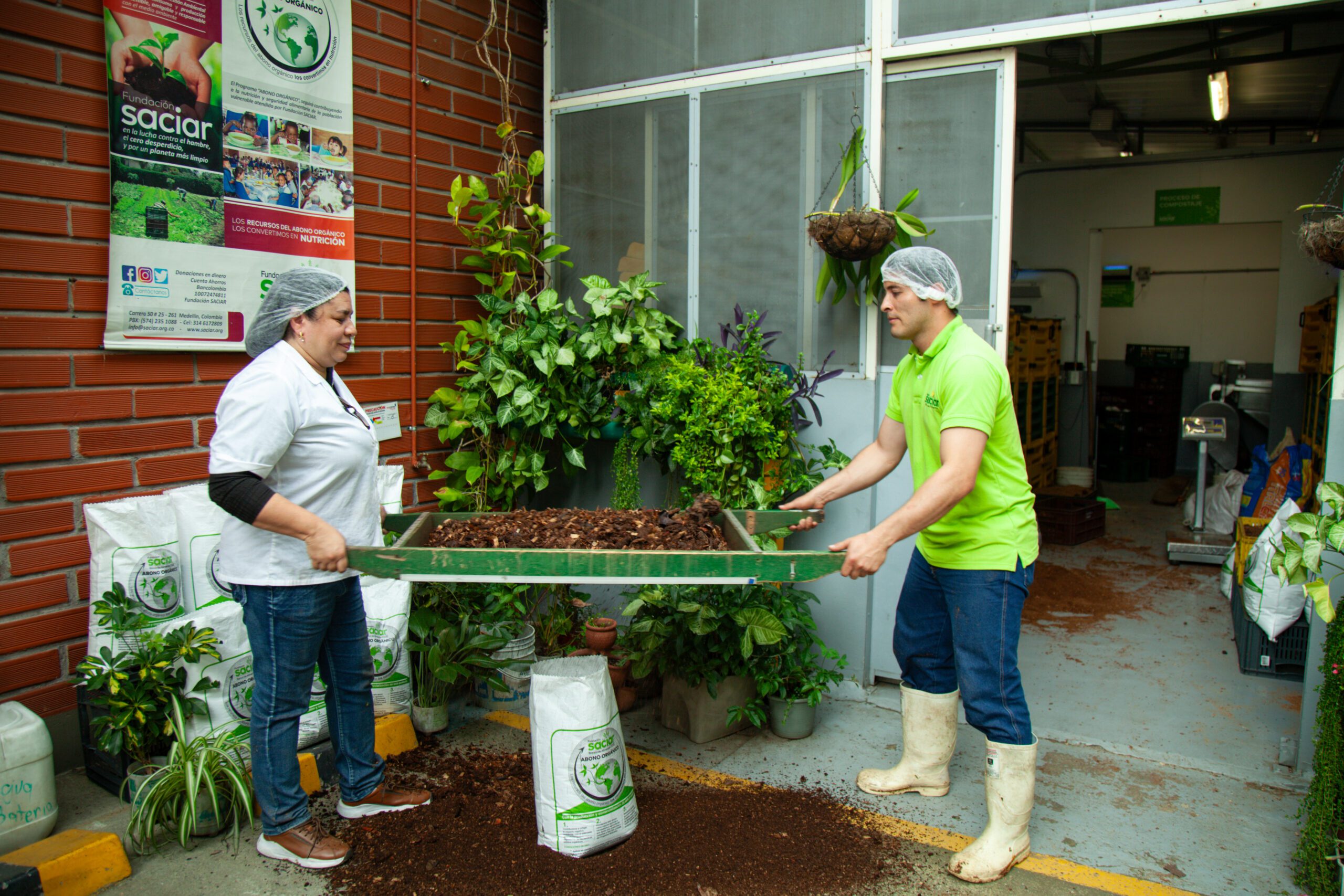
Of the 60,342 kilograms of organic waste generated at Saciar in 2024, the composting program turned 23,930 kilograms into compost. It saved the food bank of organic materials and is a bonus for small-scale farmers who donate produce to them.
About an hour away from the Fundación Saciar headquarters in Medellin, one of their trucks rolls down a bumpy dirt road towards hilly farms below. A handful of farm workers harvest cabbage to be donated to the food bank. The truck backs up toward the farm, and the workers begin lugging sacks stuffed with cabbage up the hill. Before they start loading the three tons of cabbage into the truck, Saciar staff unload sacks of homemade compost.
“This is going to be great,” says Norbey Giraldo, the manager of the farm. They’ve been donating to the food bank for more than five years and are satisfied knowing that if they can’t sell produce, it will go to good use at the food bank.
He points toward another hill. “We’re planting a new crop of lettuce tomorrow, and the compost will be a great boost for it.”
Loaded with fresh heads of cabbage, the Fundación Saciar truck lugs back up the hill, kicking off a new cycle of sustainability between the food bank and farmers in Colombia.

